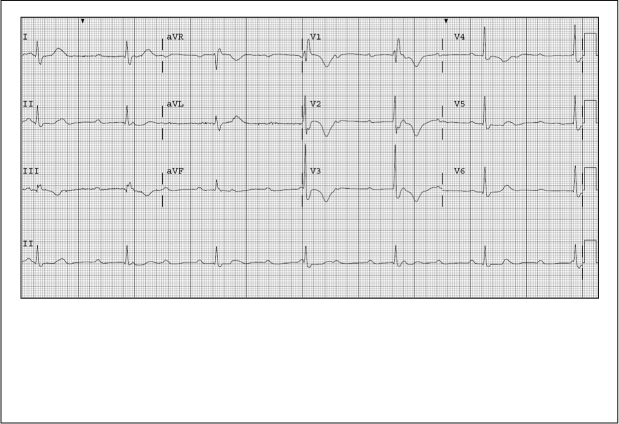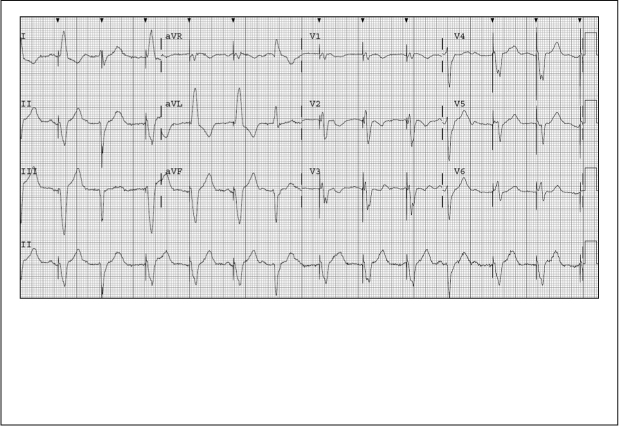Third-degree atrioventricular (AV) block (also referred to as complete heart block) is the complete dissociation of the atria and the ventricles.1 Third-degree AV block exists when more P waves than QRS complexes exist and no relationship (no conduction) exists between them.2 The escape rhythm may arise within the AV node (resulting in a narrow QRS complex), or lower in the conduction system (producing a wide QRS complex). The ventricular rate (pulse) varies from 30–40 beats/minute.2 Characteristically in third-degree AV block, the atrial rate is faster than the ventricular rate (60–100 beats/minute) presumably in response to the hemodynamic consequences of the block. Complete heart block complicates 10% of acute myocardial infarctions (AMI) and represents the most frequent unstable bradydysrhythmia encountered in the patient with AMI.3 In most cases of persistent third-degree AV block, permanent pacing is required.1,2 Treatment with atropine often fails to improve the ventricular rate, as vagal stimulation of the AV node is not thought to be the cause of this finding.1
Figure 1.

12-lead ECG from a woman, age 77 years, following a syncopal episode
Demonstrates complete atrioventricular (AV) dissociation with a ventricular rate of 32 beats/minute and a right bundle branch block.
Figure 2.

12-lead ECG from same patient following insertion of a transvenous pacemaker
Demonstrates ventricular-paced complexes (pacer spikes before every QRS complex) with a ventricular rate of 78 beats/minute.
References
- Abraham M, Bond MC. Chapter 32: What are the electrocardiographic indications for temporary pacing? In: Brady WJ, Truwit JD, editors. Critical decisions in emergency medicine and acute electrocardiography. West Sussex, UK: Wiley-Blackwell; 2007. pp. 281–2. (eds) p. [Google Scholar]
- Budzikowski AS, Corsello AC, Daubert JP, et al. Third-degree atrioventricular block [monograph on the Internet] New York: MedScape Reference; updated 2009 Jun 17 [cited 2011 Mar 6]. Available from: http://emedicine.medscape.com/article/162007. [Google Scholar]
- Swart G, Brady WJ, DeBehnke DJ, Ma OJ, Aufderheide TP. Acute myocardial infarction complicated by hemodynamically unstable bradyarrhythmia: prehospital and ED treatment with atropine. Am J Emerg Med. 1999 Nov;17(7):647–52. doi: 10.1016/s0735-6757(99)90151-1. [DOI] [PubMed] [Google Scholar]


